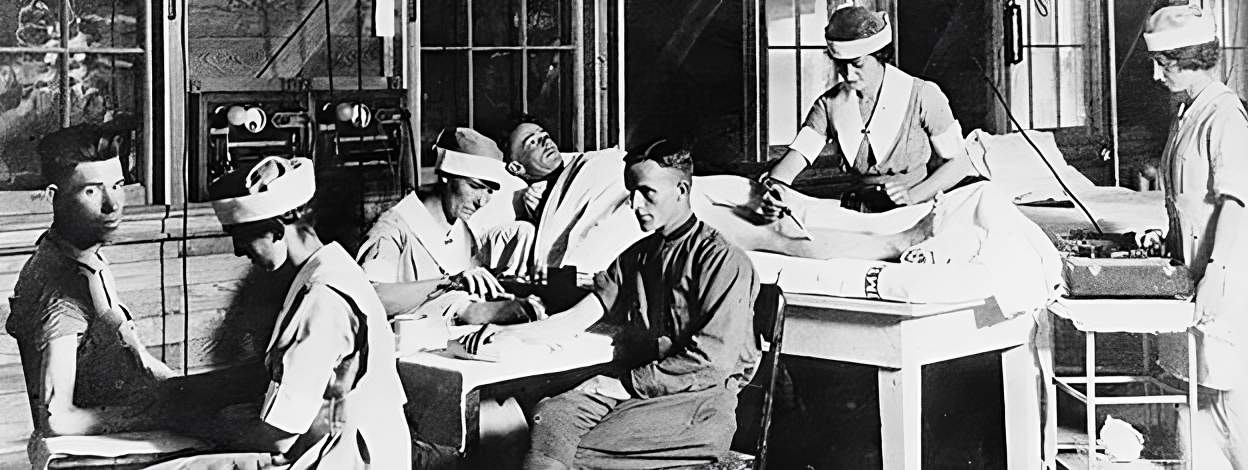
- (480) 470-7978
- 10207 E Hampton Ave Ste. 105, Mesa 85209
- Mon - Thu: 8AM - 6:00PM, Fri: 8AM - 12PM

Who knew that physical therapy began as a way to treat wounded soldiers in World War I?
Back then, physical therapists were called “reconstruction aides” who worked tirelessly to develop rehabilitation programs designed to restore range of motion and mobility for injured military personnel. This was no small feat, as many of the injuries sustained during the war were life-changing and required extensive rehabilitation.

During World War II, medical advancements allowed for more soldiers to survive injuries that affected their musculoskeletal system, leading to the need for rehabilitation programs. Today, physical therapy is an essential part of restoring range of motion and mobility for injured military personnel.
But physical therapy isn’t just for war injuries. In fact, during the Poliomyelitis epidemic of the 1920s and ‘30s, therapists worked with patients to create ongoing therapeutic exercises that would restore mobility and retrain muscle movement. Today, physical therapy has evolved into numerous specialties including sports medicine, wound care, acute and post-operative rehabilitation, pulmonary and cardiovascular rehab, long-term management of lymphedema, and neurologic rehabilitation.

Did you know that physical therapists can even help with positional vertigo? That’s right – in as little as one session, a physical therapist can resolve episodes of this form of vertigo, which causes brief, yet serious bouts of dizziness with movement of the head.
Physical therapists use a variety of techniques such as heat and cold therapy, electrode therapy, targeted stretches, manipulation and manual therapy, radiation, and even sound waves as part of the rehabilitation process
And let’s not forget about the evolution of the professional organization. The American Women’s Physical Therapy Association was formed in the 1920s and ‘30s, led by its first president, Mary McMillan. The organization later evolved into the American Physiotherapy Association and then to its current name, the American Physical Therapy Association (APTA).
Today’s physical therapists are highly trained and educated medical professionals, requiring a Doctorate degree to practice. And if you’re interested in assisting with exercises and treatments during therapy sessions, you can become a PT assistant with an Associate degree.
Physical therapists can practice in a variety of settings such as private outpatient clinics, hospitals, nursing and rehabilitation centers, home health settings, and schools. Some even specialize in sports medicine and travel with professional athletes to prevent injuries, treat existing conditions, and rehabilitate old injuries.
So, the next time you hear the term “physical therapy,” remember its fascinating history and evolution, and the countless ways it can improve and restore mobility and quality of life for people of all ages and backgrounds.

Opening Hours:
Monday – Thursday: 8am – 6:00pm
Friday: 8am – 12pm
(Closed on Saturday & Sunday)
Phone: (480) 470-7978
Email: (Click to email)
Address: 10207 E Hampton Ave Ste. 105, Mesa, AZ 85209
Copyright © 2022 Southwest Family Physical Therapy- All Rights Reserved